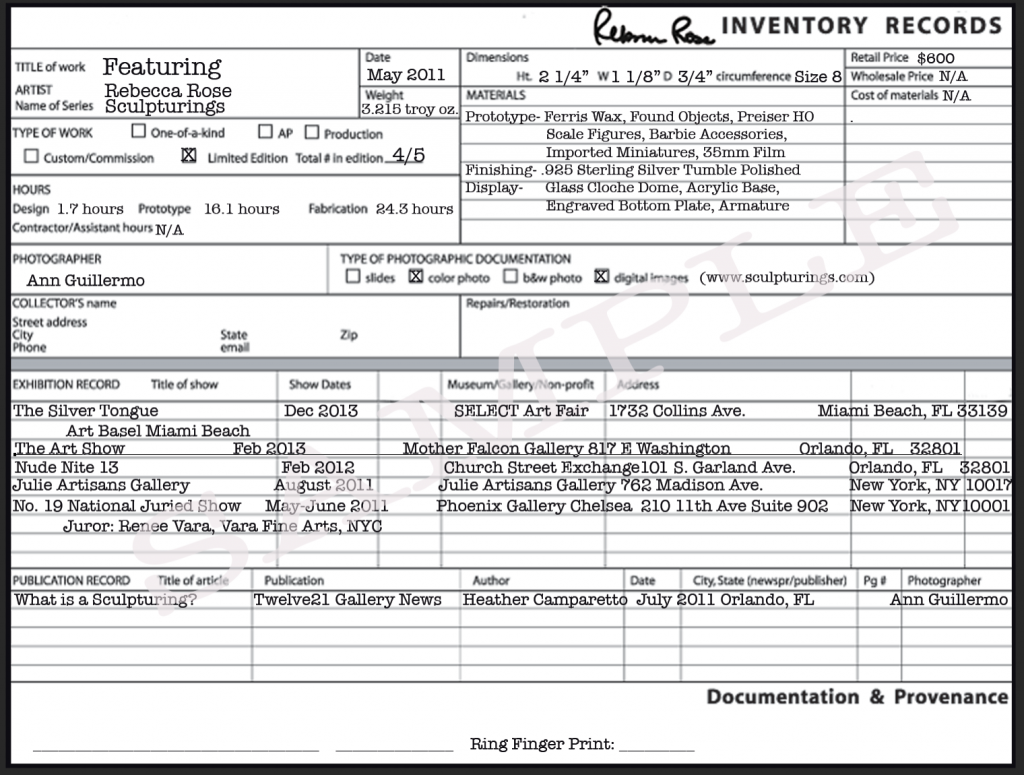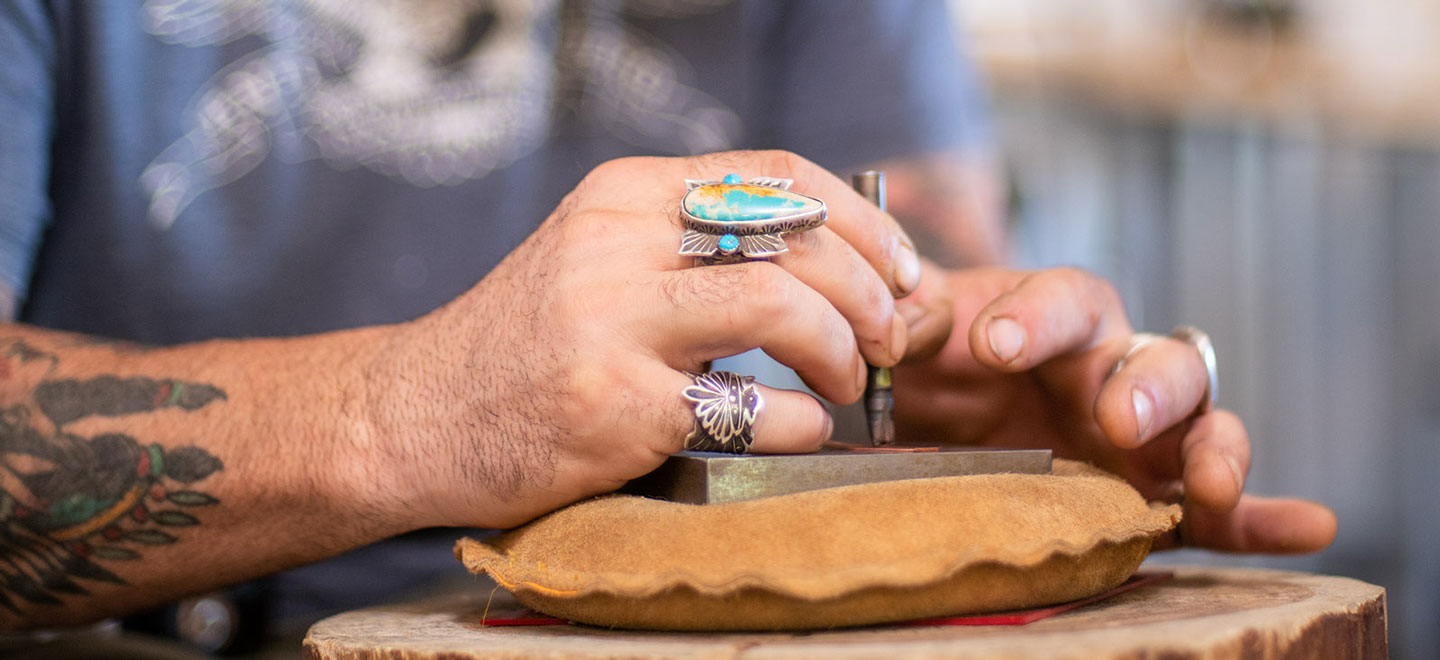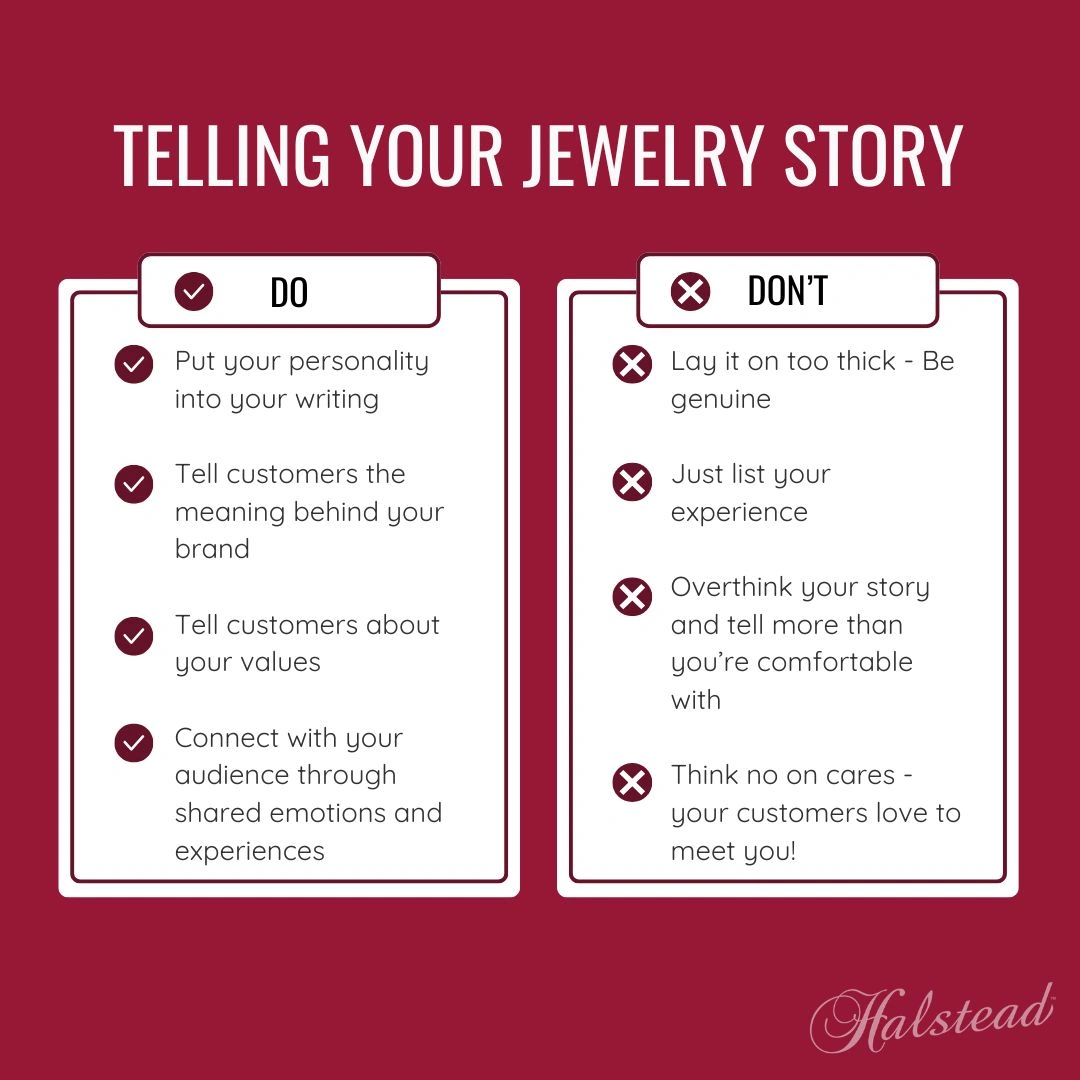Buying jewelry is often an emotional purchase for your customers. Connect with them by turning your artist bio into a jewelry story that lets them know who you are as a designer and a person.
Your jewelry artist bio is one of your business' most important tools. It helps introduce you to your customers, a judging committee, or the media. This is a time for you to show off your education, experience, and any awards you've earned. A basic bio should also include the themes of your jewelry designs, any media coverage you've received, and key information about you. But what if you took it a step further? Don't just tell your customers about you. Tell them about your story! Turn your jewelry artist bio into your jewelry story (and a powerful marketing tool) with this easy storytelling process.
What is your Jewelry Story?
No matter how you became interested in making jewelry, you have a story to tell. It may have been a life-altering event, or it may have been simply finding the right creative outlet at the right time. What turns your bio into a jewelry story is how you tell it. Your jewelry story should not just tell your background but give the reader extra insight into who you are and how your jewelry collection came to be. What inspired you to become a jeweler? What inspired your collection? Your story should help your customers connect with you and understand who you are.
Emma Hoekstra has never shied away from telling her story. "After losing my boyfriend in a car accident, my jewelry making classes turned into therapy. He was just gone and I was left picking up the pieces to what I thought my life was going to be. Metalsmithing changed me. My classes were healing me. They allowed me to work through my grief and create as I navigated life without him. I became passionate about my work and fell in love with the techniques and processes of this important craft."

Your story doesn't have to include something as life-altering as a devastating death though. Christine Bates found jewelry making and connected with it on a different level from most art. "I came to the jewelry studio late, in my last semesters of school. My focus up to that point had been Art Education, and my own art had always been of the painting and drawing variety. But I loved the resilience of the metal and the physicality of the process. I loved how all of the filth and heat and push and pull resulted in a luminous object that you could place on your desk or wear around your finger. This was art that you were supposed to touch."

Why tell your Jewelry Story?
When you tell your jewelry story, your customers will be able to connect with you and your jewelry in an all-new way. Marketing trends are moving away from a resume-style About Us page and moving towards a storytelling format. Think about some of your favorite products and how they're marketed to you. Are you told "Buy product x because it's great quality and has a great warranty"? Or are you told "Product x changed my life because...."? Storytelling in marketing creates the emotional connection and gives the customer a reason to buy the product.
Buying a piece of jewelry is often an emotional decision. Creating an emotional connection with a potential customer may be the deciding factor for someone to buy your jewelry. Yes your customer is going to care about the quality of your product, but that isn't what's going to push them to purchase - there is a lot of quality jewelry out there. Storytelling marketing helps push your customer to act.
Through storytelling, you're marketing yourself to a customer - not just your jewelry. Why should a customer trust you to create a custom jewelry piece or revitalize an heirloom jewelry piece? Why should you be the jeweler chosen to create a special piece of jewelry, such as an engagement ring? Use your jewelry story to build a trust with potential customers and convince them you are worthy of creating something for them.
Avery Lee's jewelry story starts at a young age with a special and sentimental piece of jewelry. She's telling her audience why jewelry is so important to her. How many customers can relate to this story? When you read it, does your mind immediately go to a certain piece in your own jewelry box? Then she moves her story into how her jewelry making journey began as a way of coping with her grief.

Leah Prada Harrison's jewelry story is a little different, but still provides an interesting emotional aspect. Unlike many handmade jewelers, Leah's company doesn't use her name. So she uses her jewelry story to tell us the background of her business name. Here she shares some insight with her customers about her heritage and journey as someone with a mixed background and how those influences all work together to create her aesthetic.

How to write your Jewelry Story
Writing your jewelry story may not come naturally. You'll need to combine facts about your background with a writer's ability to tell a story. At its core your jewelry story should tell your background in a new and interesting way. Follow these steps to turn your artist bio into your jewelry story.
Analyze your journey
Now is the time to think about what should be included in your jewelry story. Write everything down in a brainstorming session. First think about the information you would put in a traditional artist bio: Who are you? What have you done? What are some accomplishments? For example, did you attend a university metals program, a studio school or were you self-taught? Include any awards or highlights from this time.
Think about what goals you have for your jewelry. What problem are you hoping to solve for your customers? Your audience will want to know your values. Do you use recycled materials? Do you use ethically sourced materials? What are your core beliefs? If you don't have one already, create your mission statement.
Now add to that list with a little more personal information. Think about what inspires your designs. Tell your audience why you love making jewelry and what made you fall in love with it? Tell your audience what you do and what skills you've developed. Think about what changes you have made in order to get to this point in your career. What are some unique moments that have led you to where you are?
List what you're writing about
Once you're done brainstorming, pick out the most important information you would like your audience to know. Make sure you pick a mix of your traditional bio information and your personal information. All of your accomplishments may not make the cut. And if your inspiration draws on too long, you may have to shorten it.
Think about your audience
All audiences are not created equal. Who are you writing this story for: Your website customers? Your social media? A local media outlet? A judging committee? You may want to consider writing a couple different versions even. Have a short version that can be used for social media posts and a longer version for your website. Keep your story in an easy to edit location so you can make any changes according to who you're sending it to.
Tell your story
Now tell the world your jewelry story! Fill in the gaps from your list and think about how you can tell your audience about your list of topics. Try to invoke the senses. Paint a visual picture - from Leah's story, you may have started wondering what a horse stall jewelry studio looks like. Touch is a powerful sense - Christine evokes it in her story when she talks about the love of creating something meant to be touched. You may even be able to convey the smells and sounds of a jewelry studio if it works for your jewelry story. You may want to avoid the sense of taste though!
Create an emotional connection. Emma writes about her emotions following a death. Avery writes about the attachment to an heirloom ring. Many of your customers will likely be able to connect with something you've also experienced in your life. You don't necessarily need to go into great detail, but the simple act of reaching out to your audience emotionally will resonate with them.
You also want to allow your personality to shine through. Write your jewelry story as if you were talking to a friend. Are you a bubbly person? Do you tend to be more reserved? You may never meet some of your customers in person, so you want to make sure your story helps them understand who you are.

Hook your audience in with something that keeps them reading. Emma gets right into her emotional story. Christine starts with evoking memories of pleasure through common experiences. Think about what you can say that will make your audience say, "I have to know more." Keep your story concise. If it's too long you may lose your audience. You don't need to tell your audience every small detail of your topics. Give them a taste. You also want to make sure you're not oversharing beyond your comfort zone. If you aren't comfortable telling certain details, then don't.
Kristen Baird does a great job of writing her jewelry story to hook the reader then giving separate information about herself and her accomplishments as well as more information about her jewelry design inspiration.
Edit and post
Editing is always the most important step when writing your jewelry story. Read it through a couple of times to get the wording how you want. Give it to a friend or family member to read through and help you with any last-minute edits. Once it's perfect, post it! Put it on your About page and social media pages, or wherever else you'd like to share your story.
Turning your artist bio into your jewelry story is a great way to connect with your customers. There may be instances where you'll still need your traditional artist bio, but having your jewelry story available is a great addition to your marketing and media arsenal.
Tell Your Story Through Your Jewelry
Recording the story of each jewelry piece is a part of telling your personal jewelry story. Recording your inspiration behind its creation, how you chose the materials and where they came from, where you first showed it and who purchased it creates story of your piece and creates provenance. Ideally, this provenance documents the ownership history and details of a piece all the way back to the jeweler's studio.
Why Record Provenance?
Authentication and Value
Even if you think you're too small of a business to worry about this level of record keeping, do it! One day you may be on top of the jewelry world and provenance can prove the authenticity of a piece and potentially increase its value. So, it's better to start early and get in the habit of good provenance recording for the day when it's needed.
Demonstrates Experience
Documenting every single piece of jewelry you create has a world of benefits. Using an inventory management system, such as Artwork Archive, you will be able to to manage your entire inventory and much more. Having these amazing records is also a great way to quantify your expertise, show the pieces you've made and sold, where you've shown your jewelry, and the awards you've won.

Shows Customers Reliability
People want to buy from businesses they can rely on. That trust can be built and gained through proven, document success. Rebecca Rose, a Halstead Grant winner and provenance master, says "it may sound like busy work, but from a collector's point of view, works with provenance stand out above the others. Documentation signals work as a serious piece of art to invest in, one that will stand the test of time."
The more organized you are and the more information you are able to present to interested clients, the more people will want to work with you and buy your work. Rebecca includes how a piece was made, the materials, where it exhibited, and the selling information. She also includes basic facts, such as dimensions, date of creation, and a title.
Successful Provenance
Provenance matters when it comes to building your jewelry brand. Whether you need to establish your expertise, prove the authenticity of your pieces, or pull up a record of details to help make a sale, keeping your life's work documented can be invaluable for success. The exact approach you take to documentation will depend on your price points and audience. If you are targeting collectors or the high end of fine jewelry, provenance should definitely be part of your business plan. It can also add value if you focus on other areas of the jewelry market. You may also consider including certificates of authenticity with high end items. Certificates of authenticity include the name of each piece, its back story, the date of creation and the number of casting items in the limited edition run.
This section was adapted from a previous blog by Emily Zupsic of Artwork Archive.
Now that you've written your jewelry story, use it to help you with these other jewelry business must-haves:
How to Create a Media Kit for Jewelry Artists
Tips to Nail Your Jewelry Sales Elevator Pitch
Source wholesale jewelry supplies from Halstead!







